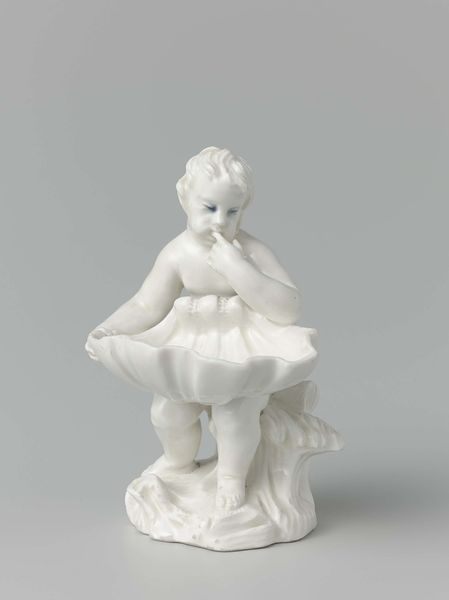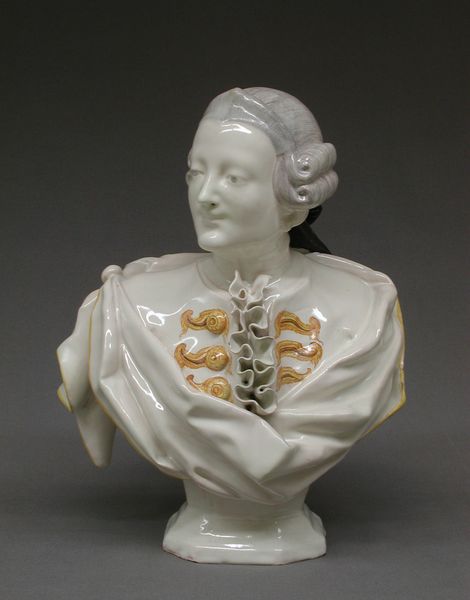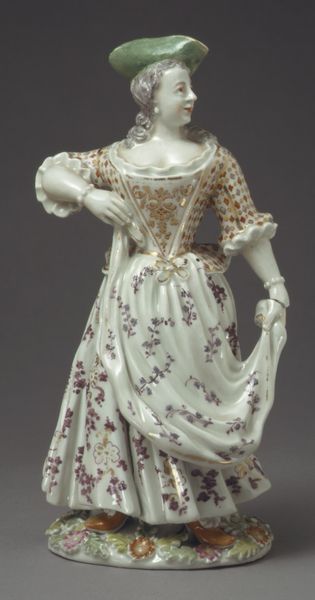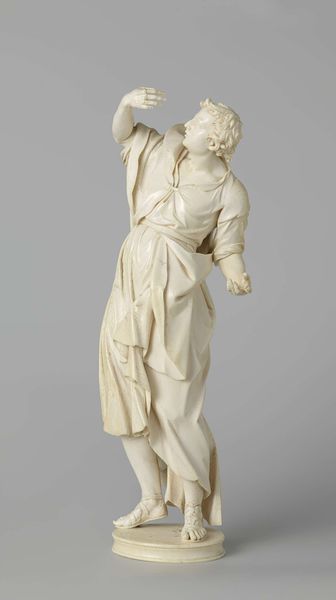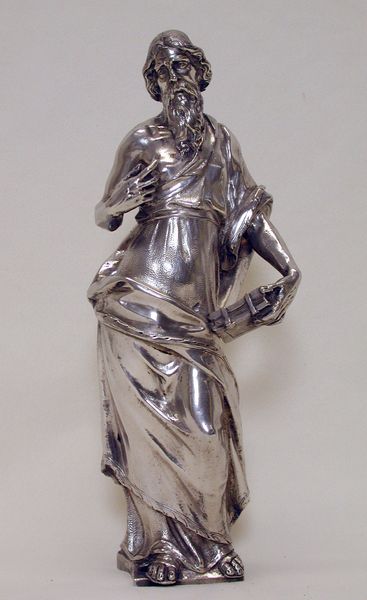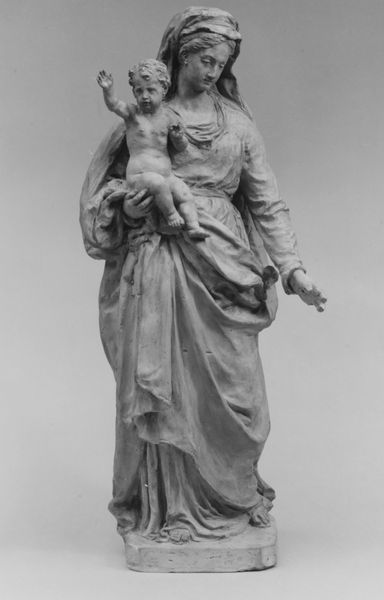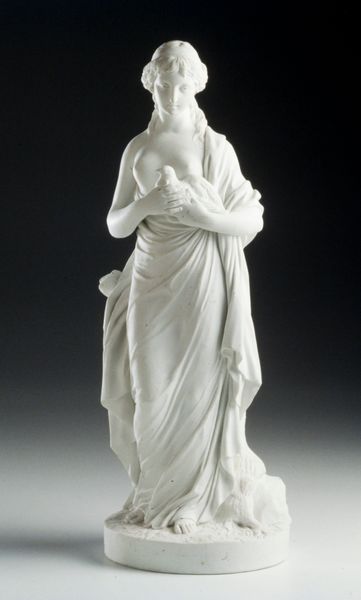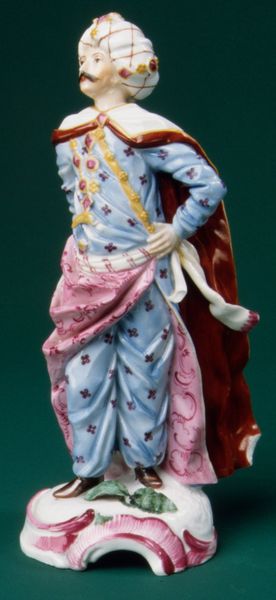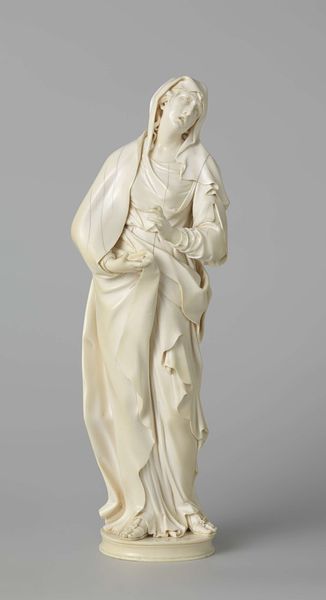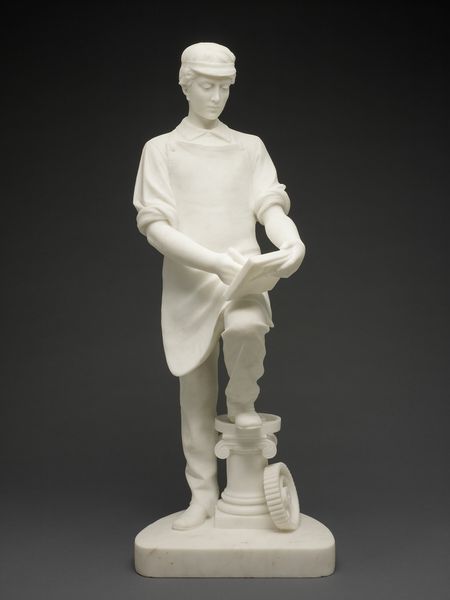
ceramic, porcelain, sculpture
#
ceramic
#
porcelain
#
figuration
#
sculpture
#
decorative-art
#
miniature
#
rococo
Dimensions: Height: 4 7/8 in. (12.4 cm)
Copyright: Public Domain
Editor: This is an intriguing porcelain sculpture called "Woman," created sometime between 1735 and 1745. Its delicate and diminutive size almost makes it feel like a secret, a miniature monument to femininity from the Rococo era. The all-white glaze is simple but elegant. How do you interpret this work in terms of symbolism? Curator: I’m struck by how such a seemingly simple form can hold such weight. White porcelain in this period signaled purity and refinement but also luxury. How might that contrast with the "commonness" implied by the subject matter – a woman, seemingly caught mid-task? Does her outfit, with its casual drapery, also hold clues about the expectations placed upon women? Editor: So the symbolism is complex and nuanced. Curator: Exactly. The figure’s pose also offers clues. Consider the way she is holding her apron. It isn’t simply functional. It seems almost like a performance. The very fact that it’s rendered in porcelain elevates this moment. Does this not bring up ideas about beauty in the mundane, and how class distinctions affect daily life? Is it possible that this figure is enacting a pose meant for nobility, an almost satiric, perhaps unconscious performance of gendered privilege? Editor: I never thought about it that way! It is like a play being performed. What strikes me most now is the quiet rebellion against expectations. Thank you, this has given me so much to think about. Curator: And for me too, considering the lasting power objects carry and how their meanings shift with time.
Comments
No comments
Be the first to comment and join the conversation on the ultimate creative platform.


